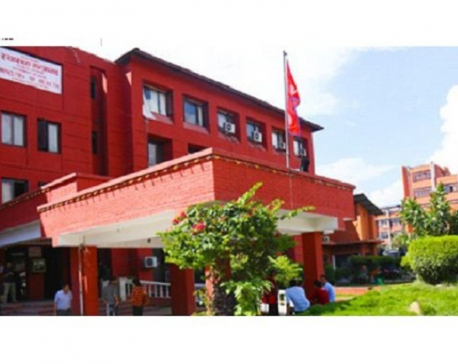
OR
Government unveils result of National Census 2021
Published On: March 25, 2023 09:00 AM NPT By: Republica | @RepublicaNepal

Women’s access to family property increases 1.1 percent
KATHMANDU, March 25: The implementation of women’s right to property has pursued a progressive path which is evident from the increment in their ownership of family properties. Women’s access to family properties has increased in the last ten years if the National Census 2021 is to be believed. According to the census, 23.8 percent households have their land and house in women’s name, a 1.1 percent surge as compared to the 2011 census.
The results of the latest census unveiled by the government on Friday shows that there are a total of 6,666,937 households in the country. Similarly, the number of residential houses stands at 6,660,841. Of them, 31.55 percent households are owned by women, a 5.82 percent increment as opposed to the previous census.
Population rise
According to the latest census, the population of Nepal has climbed to 29.1 million.
Out of the total population of 29,164,578, females make up 14,911,27. Likewise, the number of males is 14,253,551. As per the previous census, the total population of the country stood at 26,494,504.
Population density in mountains, hills declining
As per the latest census, population density in mountains and hill areas has decreased over the period of last 10 years. The population density is 460 persons per square kilometer in the Terai, while it is 34 per square kilometer in the mountains. It is just 3 per square kilometer in Manang and 5,169 in the Kathmandu Valley.
According to the census data, Kathmandu district has the highest number of population across the country as the population here is counted at 2,041,587 while 5,658 people reside in Manang. In terms of distribution of population by districts, Morang, Rupandehi, Jhapa and Sunsari are among those districts facing an increased pressure of population.
Similarly, Mustang, Dolpa and Rasuwa have a smaller population.
The Terai region's population is 53.61 percent, out of the total population as 15,634,006 people reside in the Terai and this figure is 40. 31 percent or 11,757,624 in the hills. The mountain region reports the residency of 6.08 percent or 1,772,948 people.
Until ten years ago, the Terai's population was 50.27 percent of the total population followed by 43.01 percent in hills and 6.73 percent in the mountains.
Over two million Nepalis are abroad
It has been found that more than 2.19 million Nepalis are living abroad.
According to the detailed report of the National Census 2021 released by the National Statistics Office, it has been found that 2,190,592 people from 1,555,961 families are living abroad.
This number is 269,098 more than the 2011 census. In the 2011 census, 1,921,494 people were found to be absent from the family and living abroad.
According to the latest census, as many as 1,799,675 men (82.2 percent) and 390,917 (17.8 percent) women are abroad, as mentioned in the report.
The data shows that 68 percent of the population has not gone through internal migration from one local level to another while 10.8 percent of the total population opted for it. Similarly 18.2 percent of the population has migrated from one district to another while 3.1 percent of the population has migrated abroad. The number of migrated population as a whole is 9,341,408.
Employment opportunities, trade-business, study, training, dependency, natural disasters and agriculture have been cited as the major cases of migrations.
Reliance on traditional fuel continues
Although the government has emphasized development and promotion of clean energy, a large section of the population of the country still relies on traditional means of cooking fuel.
A total of 51 per cent of the households in the country said that they still use firewood in the kitchen while those using LPG gas cylinders stand at 44.3 per cent.
Similarly, those employing induction stoves to prepare food stand at 0.5 while those using traditional cow dung dry patties is 1.2 percent. Likewise, 0.5 percent of the population still uses kerosene and 0.1 use other fuels.
Ten years ago, 64 percent of the household used firewood in the kitchen to prepare food. It is evident that the reliance on traditional fuel has decreased to some extent over the decade but the number of households relying on traditional energy for cooking is still more than half of the population.
Strides in electrification
Government's vision to expand electricity in all households is almost close to realization. A total of 92.2 per cent households are under the ambit of electricity as per the latest census. Households using solar energy stand at 6.6 per cent at present.
Only 67.3 percent of the population had access to electricity 10 years ago.
Going by this statistic, 98.8 percent of the population had access to clean energy while those using kerosene and other fuel remain below 1 percent.
Nepal's literacy rate rises to 76.3 percent
Nepal's literacy rate has increased from 65.9 to 76.3 percent, compared to the year 2011.
According to the detailed report of the National Census 2021, the literacy rate of the total population aged five years and above is 76.3 percent.
Among them, the male literacy rate is 83.6 percent while the female literacy rate is 69.4 percent.
In the previous census of 2011, the literacy rate of Nepal was 65.9 percent.
You May Like This

How can Nepal Take Advantage of its Population Bonus?
November 15, 2022, marked a monumental milestone in human history as the world's population reached a staggering eight billion. This... Read More...

Maternal mortality rate being studied for the first time in Nepal
KATHMANDU, Oct 7: A study on maternal mortality rate has been started for the first time in Nepal. The Ministry... Read More...

28.5 % population poor in view of MPI
KATHMANDU, Dec 20: Some 28.5 percent population is still poor in view of multidimensional poverty index (MPI). ... Read More...




Just In
- Health ministry to conduct ‘search and vaccinate’ campaign on May 13
- Indian customs releases trucks carrying Nepali tea, halted across Kakarbhitta
- Silent period for by-election to begin from midnight
- SC issues short-term interim order to govt and TU not to take immediate action against TU legal advisor Khanal
- National consultation workshop advocates to scale up nutrition smart community in Nepal
- Patan High Court issues short-term interim order to halt selection process of NTB’s CEO
- NEPSE inches up 0.15 points; daily turnover increases to Rs 2.53 billion
- Bagmati Govt mandates tri-lingual signboards in offices














Leave A Comment